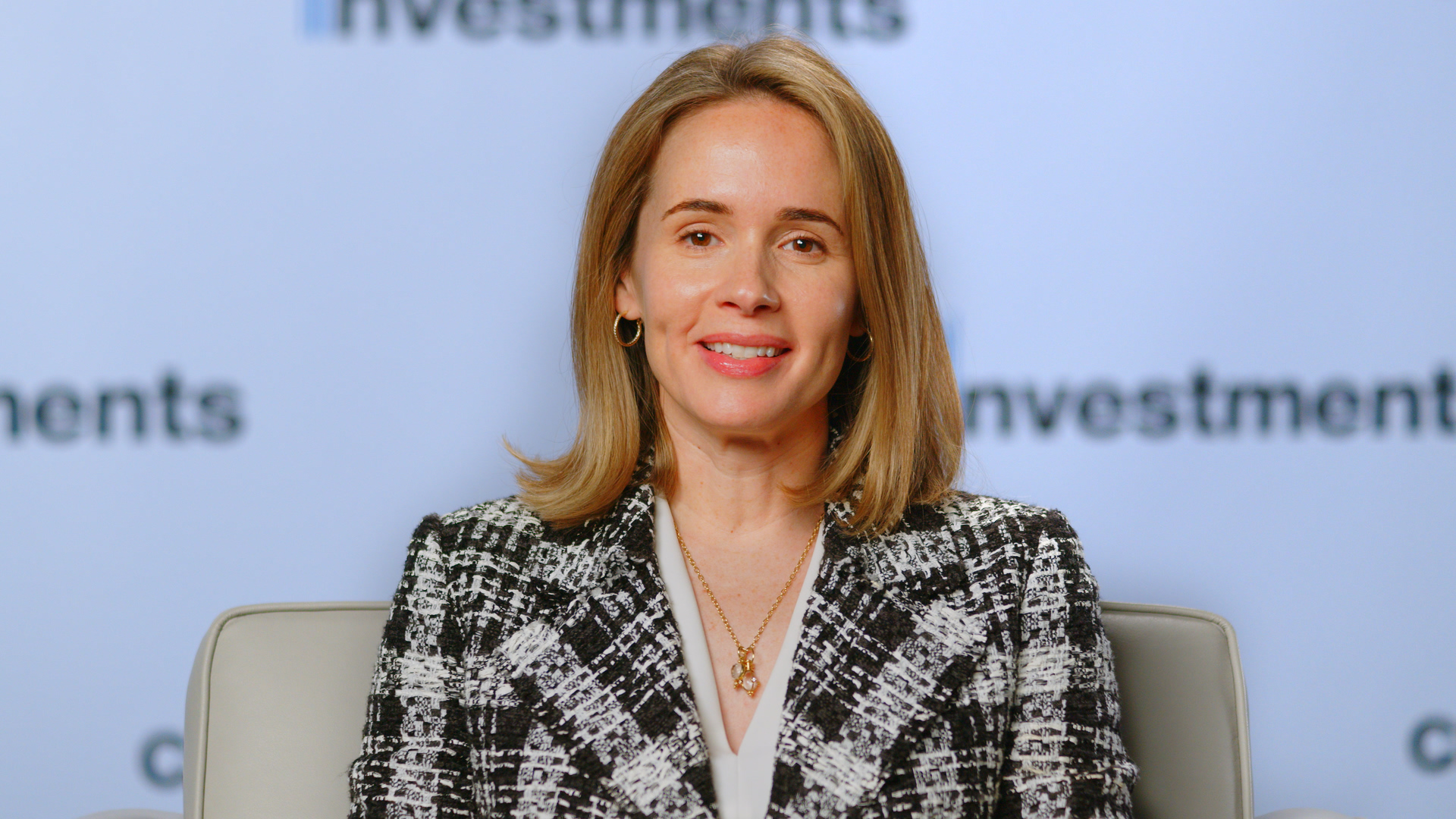
Idea in brief
➔ CPP Investments sees an opportunity to create value and pursue new investments by adopting a decarbonization investment approach, which seeks attractive returns from enabling an economy-wide evolution to a low-carbon future. This investment approach is premised on identifying, funding and supporting highemitting companies that are committed to lowering their emissions in a way that will allow CPP Investments to capture attractive risk-adjusted returns. We believe that high-emitting companies that navigate this evolution successfully will preserve and surface embedded value for patient investors.
➔ Most current initiatives to tackle the climate crisis do not address strategic sectors that are both essential and high emitting. These strategic sectors include agriculture, chemicals, cement, conventional power, oil and gas, steel and heavy transportation. The successful decarbonization of these strategic sectors is not only essential to meet wider net-zero ambitions, but also to sustain economic growth, stability and a responsible transition.
➔ The climate challenge will require unprecedented collaboration and capital. We welcome dialogue and opportunities for partnership with like-minded companies, industry leaders, investors, and other interested parties as we build a dedicated investment approach to support current and future portfolio companies in their transition.
The recent United Nations climate conference in Glasgow made clear there is new urgency in the fight against climate change. In response, governments and industry are steadily widening their initiatives and mobilizing trillions of dollars to cut emissions. The financial sector is emerging as a key catalyst in these efforts. It is steering capital towards low-carbon opportunities, increasing engagement with high-emitting sectors to accelerate their transition ambitions, and articulating expectations for how opportunities need to be de-risked to become attractive, risk-adjusted investments.
The flurry of high-level commitments coming out of Glasgow represent ambition, but the challenge of how to action real progress remains. Most of these initiatives do not address a particularly serious obstacle to decarbonization: strategic sectors that are both essential and high emitting. These strategic sectors — which include agriculture, chemicals, cement, conventional power, oil and gas, steel and heavy transportation — play a critical economic role: supplying vital products and services that, with current technologies, have no viable substitutes. These sectors account for almost one-third of the GDP of the world’s 75 largest economies and over two-thirds of the world’s greenhouse gas emissions. The successful decarbonization of these strategic sectors is not only essential to meet wider net-zero ambitions, but also to sustain economic growth, stability, and a responsible transition.
Until additional economic low-carbon alternatives are developed for strategic sectors, many net-zero solutions will remain reliant on carbon-intensive supply chains. Renewable energy, for instance, is highly dependent on these legacy sectors. Wind energy is helping to rapidly decarbonize the grid, yet each turbine is supported by tons of carbon-intensive steel resting on foundations of heavy-emitting cement and requires the use of diesel engines in its transportation and construction. Similarly, the supply chain for electric vehicles remains highly emissions-intensive.
These essential sectors present both an urgent need and promising economic opportunity that is well suited to long-term investors that can provide the partnership and strategic capital needed to support low-carbon transitions.
Though encumbered with hard-to-abate emissions today, we believe select companies can profitably transition over the mid- to long-term, with the right interplay of leadership, accountability, innovation and capital.
This decarbonization investment approach complements our ongoing commitment to investing in early-stage companies that are developing innovative climate technologies. We will continue to build on these existing efforts so we can fund businesses across the entire energy spectrum in the most responsible way possible.
FIGURE 1
Innovative incumbents – Evolution success stories in three of our investments
Ørsted
Established in 1972 as Danish Oil and Natural Gas to manage Denmark’s North Sea oil and gas resources, the company changed its name to Ørsted in 2017, officializing a strategic shift to wind and other renewable energy services.
• A global leader in offshore wind, Ørsted transformed from one of the most coalintensive energy companies in Europe to completely phase out of coal by 2023.
Umicore
With century-old roots in mining, Belgium’s Umicore has shifted from primary extraction to recovery. The world’s top recycler of gold and other precious metals, Umicore is adapting its skills to recover high-value minerals from spent Electric Vehicle (EV) batteries.
• Umicore now derives over 77% of its revenues from clean mobility and recycling.
Another example of an innovative incumbent is Wolf Midstream (see Wolf Midstream: Building backbone infrastructure to enable an evolution to a lowcarbon economy).
Though encumbered with hard-to-abate emissions today, we believe select companies can profitably transition over the mid- to long-term, with the right interplay of leadership, accountability, innovation and capital. To address this opportunity, CPP Investments is launching a decarbonization investment approach focused on attractive investment opportunities that help enable an economy-wide evolution to a low-carbon future. This approach is premised on identifying, funding and supporting high-emitting companies that are committed to lowering their emissions over time in a way that will allow CPP Investments to capture attractive risk-adjusted returns.
We believe breakthrough technologies are on the horizon that will scale to support the future decarbonization of these companies. This decarbonization investment approach complements our ongoing commitment to investing in early-stage companies that are developing innovative climate technologies, such as New Jersey-based Solidia which is pioneering carbon reduction solutions for cement and concrete. We will continue to build on these existing efforts so we can fund businesses across the entire energy spectrum in the most responsible way possible.
Although our new decarbonization investment approach is still nascent, we already hold stakes in innovative companies in high-emitting sectors, such as oil and gas, and mining. By successfully executing low-carbon transitions while continuing to serve customers, these innovative incumbents highlight the potential for companies that are able to solve the decarbonization puzzle and deliver returns which outperform the market (see Fig. 1). Prerequisites for the successful execution of these transitions are strong leadership and deep organizational transformation, that includes re-skilling key workers, while ensuring communities built around high-emitting sectors are not left behind.
The critical role of long-term investors in catalyzing economy-wide decarbonization
As these innovative incumbents show, the rewards of shifting hard-to-abate businesses to low-carbon pathways include company-level performance gains. But, the ability to identify and fund high-emitting companies for decarbonization is also vital to avoiding system-wide risk to long-term economic growth.
The evolution has broad implications for long-term investors, both in terms of their portfolio mix and overall investment approach. It offers the opportunity to build value by supplying both capital and expertise. Encouraging portfolio companies to undertake a serious transition effort can result in various advantages, including financial, operational and reputational ones, such as:
• Improved hiring: Engaged top-tier talent is increasingly biased towards companies with well-articulated sustainability goals.
• Revenue growth and margin expansion: Green business lines have higher growth prospects because of demand from downstream customers that are seeking to meet their own net-zero commitments.
• Reduced operating costs: Upgrades to more efficient systems and renewable energy have been shown to lower costs.
• Lower cost of capital: Companies with sustainability targets have greater access to a growing pool of financing with lower borrowing costs.
• Risk reduction: Cutting energy consumption and carbon emissions can reduce exposure to potential carbon regulations or taxes.
In addition to patient capital, this evolution will require sector expertise, knowledge sharing and multi-stakeholder collaboration throughout the process. Our new decarbonization investment approach is designed to support portfolio companies that have the potential to transition as they navigate new funding sources, transform assets, re-evaluate strategy, and undertake other business activities required to create value in the journey to a low-carbon future. These funding sources could include a variety of sustainable finance facilities, including transition bonds.
As mentioned above, this approach is particularly relevant for companies in hard-to-abate sectors, including chemicals, cement and steel, among others. These high-carbon emitters provide goods and services that are essential building blocks for the rest of the economy, making them vital to a net-zero economy. However, several of these key sectors have only recently begun to mobilize their human and financial capital to develop abatement technologies. Given those long timelines, patient capital has a unique opportunity to help them develop and scale low-carbon technologies and businesses.
While the economy-wide transition is still at an early stage, we have identified a set of sectors with high potential to transition (see Fig. 2).
FIGURE 2
High potential transition opportunities by sector
In the next three decades, over US$100–150 trillion will be required cumulatively to decarbonize high-emitting sectors.
| Independent power producers & utilities | Transport | Buildings | Cement & construction materials | Chemicals | Agricultural products | Oil & gas | |
| Estimated global investment required | US$59 trillion | US$41 trillion | US$6.1 trillion | US$1.5 trillion | US$2.2 trillion | US$1.9 trillion | Requirement embedded throughout overall US$100-150 trillion estimate |
| Potential paths to decarbonize | • Renewables • Grid flexibility (e.g., energy storage) • Carbon, capture, utilization, and storage (CCUS) • Hydrogen |
• Electric vehicles • Hydrogen • Biofuels • Fuel cells |
• Electrification • Building design • District heating • Efficient cooking technology • Energy efficiency |
• Alternate fuels • Alternate binders • More efficient equipment • CCUS |
• Process, energy efficiency • Alternate fuels and feedstocks • CCUS |
• Protein alternatives • Regenerative agriculture • Precision agriculture |
• Biofuels • Synfuels • Electrification • Hydrogen • CCUS |
Source: Global Financial Markets Association and Boston Consulting Group, Climate Finance and the Real Economy, December 2, 2020.
Our approach: Helping select high-emitting companies to transition successfully
For hard-to-abate sectors, strategies for cutting emissions generally fall into a few broad categories. These include moving to greener fuels and process technologies; adopting new business models; adding capabilities for transformation and repurposing assets; and enabling the responsible decommission/retirement of obsolete high-emitting assets.
We believe these transition categories offer overlooked opportunities for investors. Under our new decarbonization investment approach, we are seeking to identify those companies that offer the greatest potential to build value through their transition, regardless of sector. As such, CPP Investments may buy and hold promising companies with significant carbon footprints if we believe they are fundamentally undervalued and there is an opportunity to build value by helping them accelerate their decarbonization.
To analyze the risks and opportunities inherent in this approach, we’ve developed four key metrics and a set of factors for each that can help investors assess a company’s abatement potential. To determine which incumbent high-emitting assets we should target as part of this decarbonization investment approach, we assess their value drivers. These include their potential to improve revenues and reduce costs along with their potential to decarbonize and generate attractive returns (see Fig. 3).
FIGURE 3
Decarbonization transformation potential
| Category | Key Factors | Notes |
| Overall decarbonization potential | • Technical feasibility • Timeframe • Policy headwind or tailwind |
We seek to support companies with either meaningful “proven” or “probable” abatement capacity contingent on the interplay of falling technology costs, tightening regulation and higher carbon prices. For more about how we define an organization’s overall “transition capacity”, see “The Future of Climate Change Transition Reporting”. |
| Decarbonization cost | • Relative cost of GHG emissions abatement | The cost of abatement will differ across companies based on variables such as location, innovation and scale. |
| Upside potential | • New valuecreation opportunities | Low-carbon products or strategies can open new revenue lines. First-mover EV makers, for example, are selling green credits to legacy auto companies. |
| Downside risk | • Physical risk • Transition risk |
Climate change may imperil key operations, such as hurricane exposed shoreline facilities. For example, could the transition leave carbon-intensive assets stranded? |
For some heavy emitters the road ahead is reasonably clear: both low-carbon technologies and funding models exist to help facilitate their transition. For example, although much remains to be done to meet climate aspirations for the electricity sector, power producers are steadily shifting away from coal towards cost-competitive lower-carbon options (such as natural gas and renewables coupled with storage).
For many essential hard-to-abate sectors, plotting a decarbonization strategy will be more challenging. Indeed, some legacy businesses will not survive. But others, even absent an immediate low-carbon solution, can tap into competitive advantages — whether grid interconnections for better access to renewables or access to scarce resources such as water. These can give some legacy businesses an edge over less well-positioned peers, and allow them to maintain profitability as they make longer-term investments in low-carbon technologies, business plans and related decisions.
The private sector’s role in addressing an urgent crisis
The private sector faces growing expectations to fund a deeper more complete economy-wide transition to net zero. As part of this push, we see an unmet need — and opportunity — to support the transition of select strategic hard-to-abate companies to a low-carbon pathway. As we explored in a recent CPP Investments research paper (“The Future of Climate Change Transition Reporting”), to invest in the whole economy evolution required by climate change, investors and business leaders must increasingly shift their attention from sector-level climate policy to on-the-ground transition challenges. This requires focusing analysis and investment on actual steps individual businesses can take to decarbonize their day-to-day operations.
CPP Investments’ aspirations
Our goal is to better assess and support the long-term transition of select carbon-intensive companies whose goods and services are essential for the global economy’s wider decarbonization efforts and for ongoing growth. The climate challenge will require unprecedented collaboration and capital. We welcome dialogue and opportunities for partnership with like-minded companies, industry leaders, investors, and other interested parties. As we expand our competency in this space, we hope others will work alongside us to advance the push to identify, fund and facilitate opportunities on the journey toward a sustainable future.
Wolf Midstream: Building backbone infrastructure to enable an evolution to a low-carbon economy
Wolf Midstream was established in 2015 as a CPP Investments platform investment with a focus on acquiring, developing and operating midstream energy infrastructure assets in Western Canada, such as pipelines, processing facilities, storage terminals and related infrastructure.
In recent years, the Calgary-based privately held company has added a Carbon Business Unit to its operations, focused on reducing carbon emissions through the development of world-scale CO2 infrastructure both in Canada and abroad. Completed in the spring of 2020, Wolf Midstream’s Alberta Carbon Trunk Line (ACTL) ranks among the world’s largest integrated carbon capture, utilization, and storage (CCUS) networks. At full capacity, the ACTL can transport up to 14.6 million tonnes of CO2 per year — equivalent to roughly 20% of all current Canadian oil sands emissions.
The ACTL receives anthropogenic CO2 that is a by-product of hydrogen manufacturing from two industrial sources – a fertilizer processing plant and a refinery – near Edmonton, Alberta. From there, the CO2 travels south via a 240-km pipeline to Central Alberta. The CO2 is then injected underground into mature oil fields for permanent storage. The ACTL has safely delivered two million tonnes of CO2 to permanent geological storage since it began operation in 2020. Alberta is one of the most desirable jurisdictions to establish a world-scale carbon-mitigation hub due to its geology and stakeholder support. From CCUS to blue hydrogen, the ACTL is a first step towards advancing a new generation of low-carbon technologies that can help both Alberta, and other industrial centers globally, transition to a net-zero future.
Designed as backbone infrastructure needed to support the evolution to a low-carbon economy, the ACTL demonstrates how an energy midstream company can deliver multi-party open-access infrastructure solutions to meet decarbonization targets in hard-to-abate industrial applications.
Facts and figures are proprietary to CPP Investments unless otherwise stated.
For more information, please contact:

Bill Rogers
Managing Director, Head of Sustainable Energies, Europe and Asia, Global Leadership Team


Disclaimer:
The Reports on this page are for historical reference only and are current as of their respective dates. They may be superseded by more recent information. We do not update past Reports or any historical information, whether because of new information, future events, or otherwise, unless required by law.
Four Minutes with Heather Tobin
Heather Tobin, Senior Managing Director & Global Head of Capital Markets and Factor Investing, shares insights on the role of disciplined
How Octopus Energy is Revolutionizing Renewables and Reshaping Utilities
In just nine years, British renewables company Octopus Energy has become the United Kingdom’s largest energy supplier.
Culture, Community, Inclusivity: A career conversation with Gen Zs
In this candid conversation, three Gen Z interns at CPP Investments share their views on workplace culture, purpose, and how their







